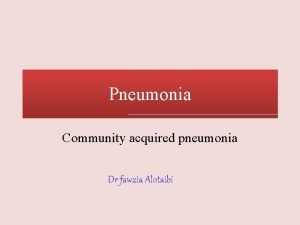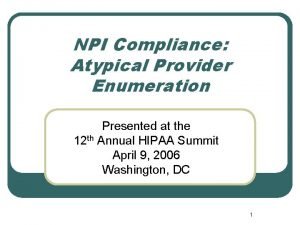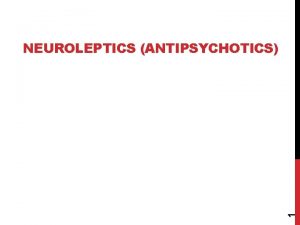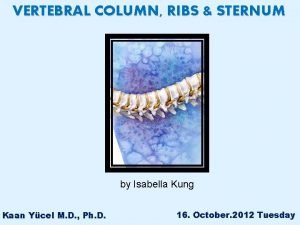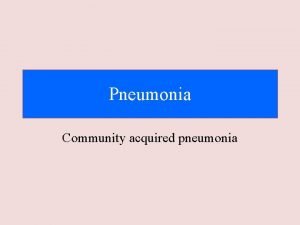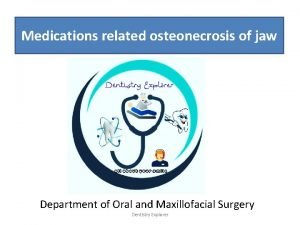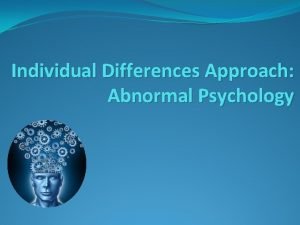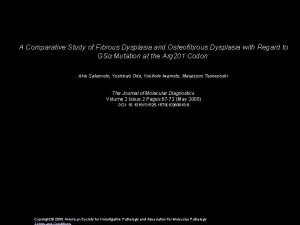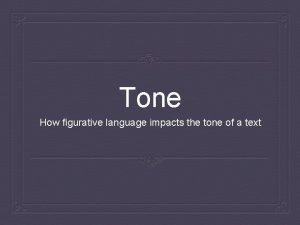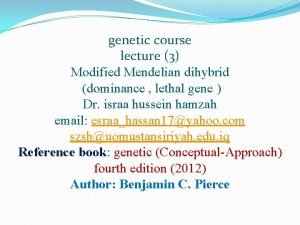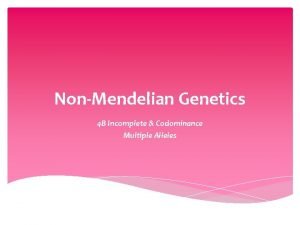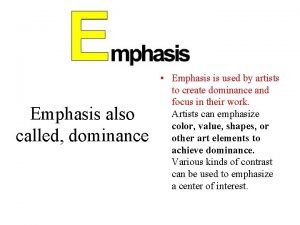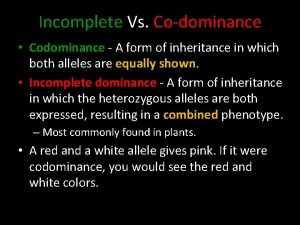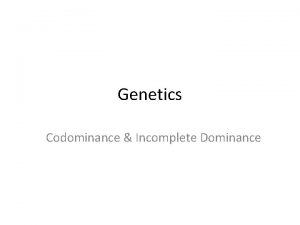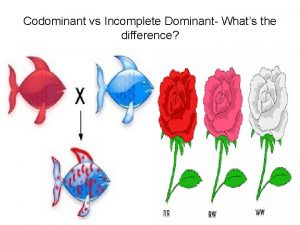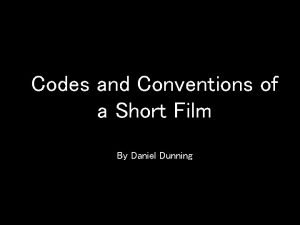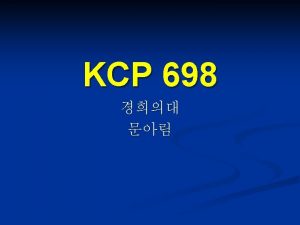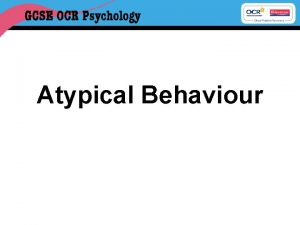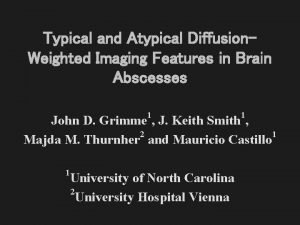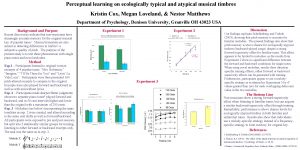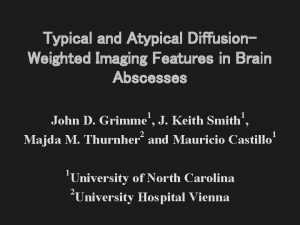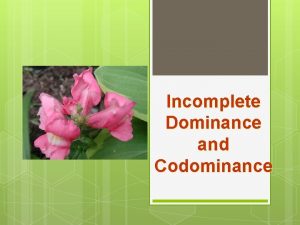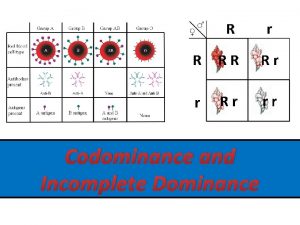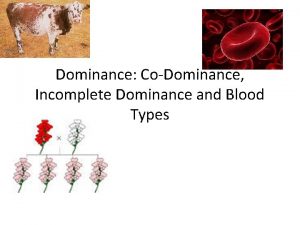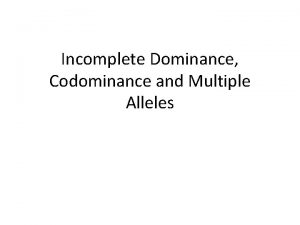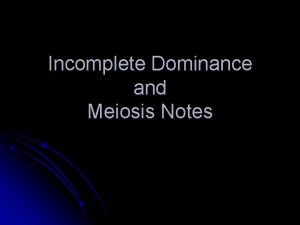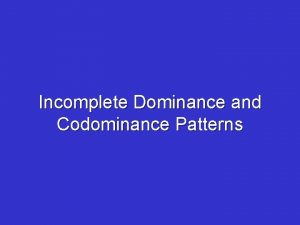The impact of typical and atypical language dominance




































- Slides: 36

The impact of typical and atypical language dominance on visual word recognition Marc Brysbaert

Language and the brain l Does the brain organisation have an effect on the ways in which language is processed, or is language “machineindependent”, like a computer program? l Functionalism vs. dualism or materialism

Language dominance Already known since the mid 19 th century that most people have language lateralised to the left (Broca, Dax) l Concluded on the basis of brain lesions l Also contribution from neurosurgery studies (epilepsy; WADA test) l Now with brain imaging techniques, this becomes possible to study in healthy participants l

Pujol et al. (1999) 50 lefthanders and 50 righthanders l f. MRI scanning l Word fluency task: silently generate words that start with an “F” l


Knecht’s work in Münster Knecht et al. (2000): language dominance defined with functional transcranial Doppler ultrasonography (f. TCD) l 188 righthanders l Word generation task (verbal fluency) l




Knecht’s work in Münster (cont. ) 188 righthanders + 138 lefthanders l Word generation task l


Does language dominance have an effect on word recognition? l General assumption: probably for parafoveal word recognition but not for foveal word recognition


Hypotheses about the foveal representation in the brain 1. Fovea projects bilaterally l Problem: Corballis & Trudel (1993) : split-brain patient



Hypotheses about the foveal representation in the brain 2. Fast interhemispheric transfer l Dehaene, Cohen, Sigman, and Vinckier (2005, p. 338): “It has been proposed that ‘foveal splitting’, whereby the left and right halves of a centrally fixated word are initially sent to distinct hemispheres, has important functional consequences for reading. However, beyond V 1, callosal projections have the precise structure required to guarantee the continuity of receptive fields across the midline and allow convergence to common visual representations. We believe that these connections minimize the functional impact of the initial foveal split. ”

Hypotheses about the foveal representation in the brain 3. Split fovea l l Brysbaert (2004, p. 260): “I have come to view the two arguments in favor of a distinction between foveal and parafoveal word recognition as seductive simplifying assumptions rather than as firm foundations of a coherent theoretical framework. They have allowed researchers of visual word recognition to ignore the vast literature of cerebral asymmetry, and they have allowed laterality researchers to ignore the fine details and controversies within computational models of visual word recognition. There was no gain to be found for either camp in questioning the assumptions. ” Ellis & Brysbaert (Neuropsychologia, 2010)




OVP-curve and cerebral dominance (Münster study) 20 participants from the original Knecht et al. studies contacted again l 13 male; 28 years old; 12 left-handed l Retested f. TCD l 12 LD (+1. 4 to +7. 8); 8 RD (-1. 2 to -4. 9) l f. TCD test-retest correlation r =. 78 l

OVP-curve and cerebral dominance (Münster study) l German nouns of 3 -, 5 and 7 -letters (controlled for freq. and neighbourhood size) l Presentation: l 7 possible fixation locations shifted across the screen l 630 stimuli l randomised order Presentation 180 ms l



r =. 55

OVP-curve and cerebral dominance (RHUL study) See whether this type of study is feasible on an individual level when you do not have access to 100 s of participants l More detailed information about the degree of laterality (f. MRI) l 26 lefthanders started the study tested with VHF tasks (picture naming and word naming) l


f. MRI study 10 individuals (4 male, 6 female; M age 19. 8) l Mental word generation task l Þ 10 letters with highest beginning of word frequency

l Pre-processing and analysis with SPM l Levels of activation compared in LH and RH in predefined anatomical regions of interest (ROI) encompassing BA 44/BA 45 = Broca’s area l l l LI > +0. 4 were classed as left-dominant participants LI < -0. 4 were classed as right-dominant participants -0. 4 > LI < +0. 4 were classed as bilateral participants >> 6 >> 2

l VHF picture naming and f. MRI_LI: r = 0. 77, p < 0. 01 l VHF word naming and f. MRI_LI: r = 0. 63, p < 0. 1

OVP task with f. MRI subgroup 4 letter words fixated on each position l 7 letter words fixated on each odd position (1, 3, 5, 7) l All words seen at all positions by each participant l

OVP task with f. MRI subgroup atypical dominance slopes: -2. 6; 3. 41 typical dominance slopes: 6. 77; 19. 69 Highly significant positive correlations : Øfor the 4 -letter/f. MRI_LI r = 0. 85 Øfor the 7 -letter/f. MRI_LI r = 0. 70


Conclusions 1. 2. 3. 4. We can predict with near 100% accuracy the laterality of speech production by looking at the slope of the OVP in a word naming task This pattern is already present for 4 -letter words, subtending a width of slightly more than 1. 5 degrees Same results (though slightly worse) are obtained for the VHF tasks we used Clear that IHTT is involved in foveal word recognition and that it has a substantial cost, even in healthy adults

Conclusions 5. Does interhemispheric transfer happen early (i. e. , before word recognition starts as in SERIOL) or late (i. e. , do both hemispheres start word processing on the basis of the information received as in Shillcock et al. ) l In all likelihood it happens early (Van der Haegen et al. , 2009; Mc. Cormick et al. , in preparation)
 Atypical pneumonia
Atypical pneumonia Typical vs atypical chest pain
Typical vs atypical chest pain Atypical bacteria
Atypical bacteria Nodular melanoma
Nodular melanoma Legionella pneumonia
Legionella pneumonia Atypical bacteria
Atypical bacteria National provider identifier
National provider identifier Atypical psychology definition
Atypical psychology definition Atypicalfilms
Atypicalfilms Atypical antipsychotics drugs
Atypical antipsychotics drugs Atypical workers
Atypical workers Anhedonia synonym
Anhedonia synonym Louis angle
Louis angle Types of lung abscess
Types of lung abscess Pneumonia classification
Pneumonia classification Atypical odontalgia
Atypical odontalgia Atypical behavior
Atypical behavior Nikki mehta
Nikki mehta An atypical accumulation of fluid in the interstitial space
An atypical accumulation of fluid in the interstitial space Chapter 26 fluid electrolyte and acid-base balance
Chapter 26 fluid electrolyte and acid-base balance Atypical cartilaginous tumor
Atypical cartilaginous tumor What does tone mean in figurative language
What does tone mean in figurative language The difference between dominance and codominance
The difference between dominance and codominance Standards battles and design dominance
Standards battles and design dominance Standards battles and design dominance
Standards battles and design dominance Codominance incomplete dominance
Codominance incomplete dominance Difference between dominance and emphasis
Difference between dominance and emphasis Director communication style
Director communication style Codominance simple definition
Codominance simple definition Codominance punnett square
Codominance punnett square Incomplete dominance horse
Incomplete dominance horse Whats the difference between dominance and codominance
Whats the difference between dominance and codominance Codes and conventions of short films
Codes and conventions of short films Hình ảnh bộ gõ cơ thể búng tay
Hình ảnh bộ gõ cơ thể búng tay Lp html
Lp html Bổ thể
Bổ thể Tỉ lệ cơ thể trẻ em
Tỉ lệ cơ thể trẻ em
